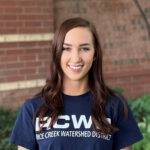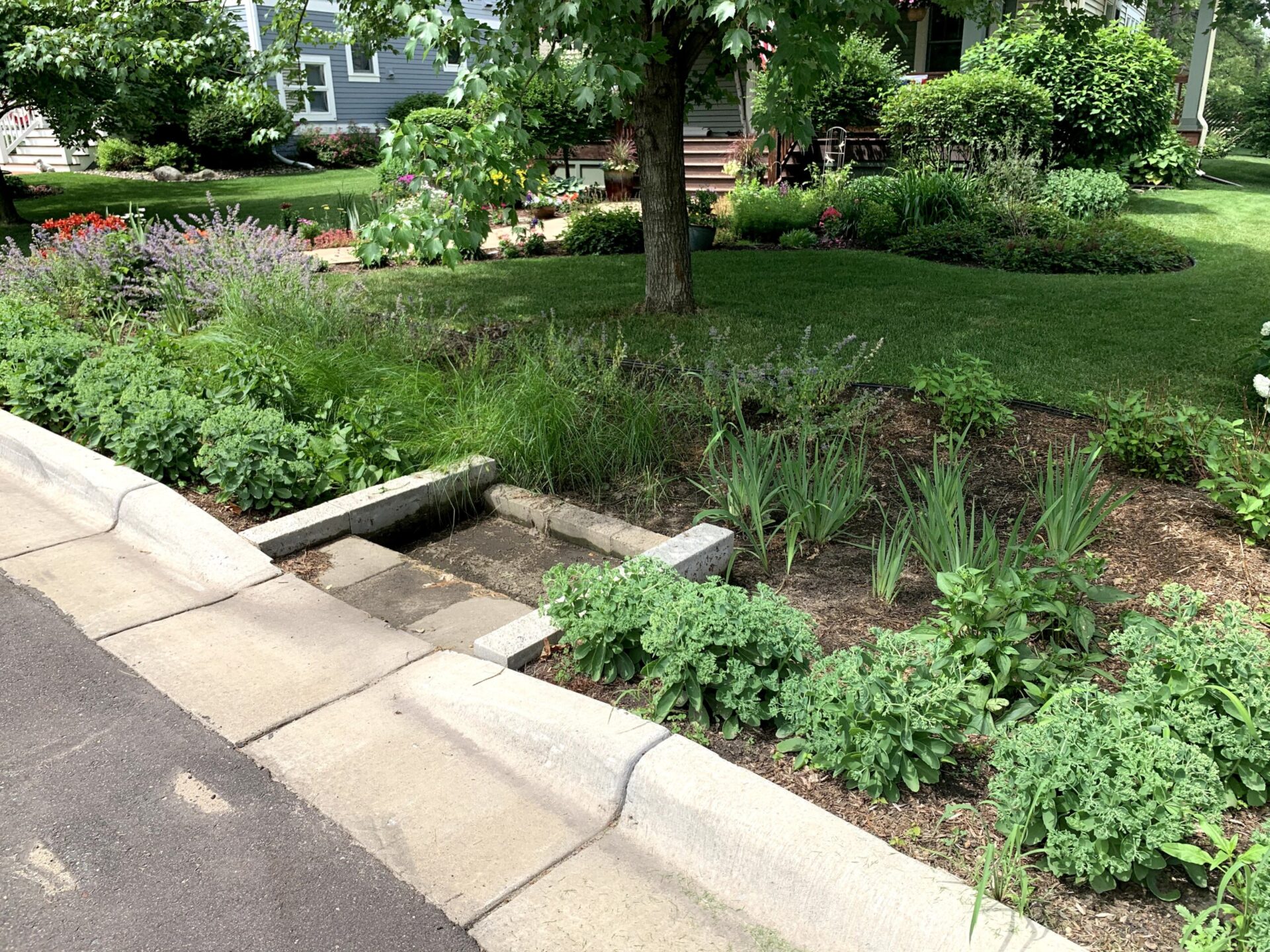
Residents
Residents in the Rice Creek Watershed District have numerous opportunities to get involved and make a positive impact on water quality in our watershed.
The RCWD offers grant programs that can help fund projects on your property, such as rain gardens, planting native plants, rain barrels, shoreline restorations, and more.
You can also participate in volunteer opportunities, such as joining the Citizen Advisory Committee, participating in the Citizen-Assisted Monitoring Program (CAMP), adopting a drain in your neighborhood, or becoming a Minnesota Water Steward. You can even take action in your homeowner’s association or lake association to protect and improve water quality in your local area.
Do you live in the Rice Creek Watershed District?
Once you confirm you live in the watershed, check out volunteer opportunities, grant programs to fund your projects, ways you can improve water quality at home, HOA information, and more below.
Fund Your Project with RCWD Grant Programs
If you are a landowner or homeowner, we can help fund improvements to your property that benefit water quality and natural resources such as rain gardens, rain barrels, permeable pavements, shoreline restorations, prairie restorations, and more. FREE site visits and help are available for projects.
Additional Grant Programs and Funding Opportunities Separate from RCWD Programs
- Lawns to Legumes Program
Program run by Blue Thumb and MN Board of Water and Soil Resources, Minnesota residents are eligible to apply for Lawns to Legumes cost-share funding of up to $400 to create pollinator habitat in their yards.
Apply here: Blue Thumb Website - Soil and Water Conservation Districts (SWCD)
Contact your county’s soil and water conservation district (Ramsey, Anoka, Washington) for more help and funding for certain projects.
Volunteer Opportunities in RCWD
RCWD Citizen Advisory Committee
Serve on RCWD’s Citizen Advisory Committee. Learn more here: Citizen Advisory Committee page
Water Quality Monitoring
The Citizen-Assisted Monitoring Program (CAMP) is a partnership to collect and analyze scientifically valid water-quality data from lakes in the seven-county Twin Cities area. Organizations and residents use the data to make better decisions about lake management.
More information and to apply here: Citizen Assisted Monitoring Program (CAMP)
Stream Health Evaluation Project (SHEP), in partnership with Friends of the Mississippi River and the MPCA, uses trained volunteers to evaluate the biological health of streams by sampling benthic macroinvertebrates, small stream-dwelling bugs.
More information and to apply here: Stream Health Evaluation Program (SHEP)
Adopt-a-Drain Minnesota
Storm drains flow directly to local lakes, rivers, and wetlands, acting as a conduit for trash and organic pollutants. Adopt-a-Drain asks residents to adopt a storm drain in their neighborhood and keep it clear of leaves, trash, and other debris to reduce water pollution.
Adopt a Drain here: Adopt-a-Drain Minnesota Website
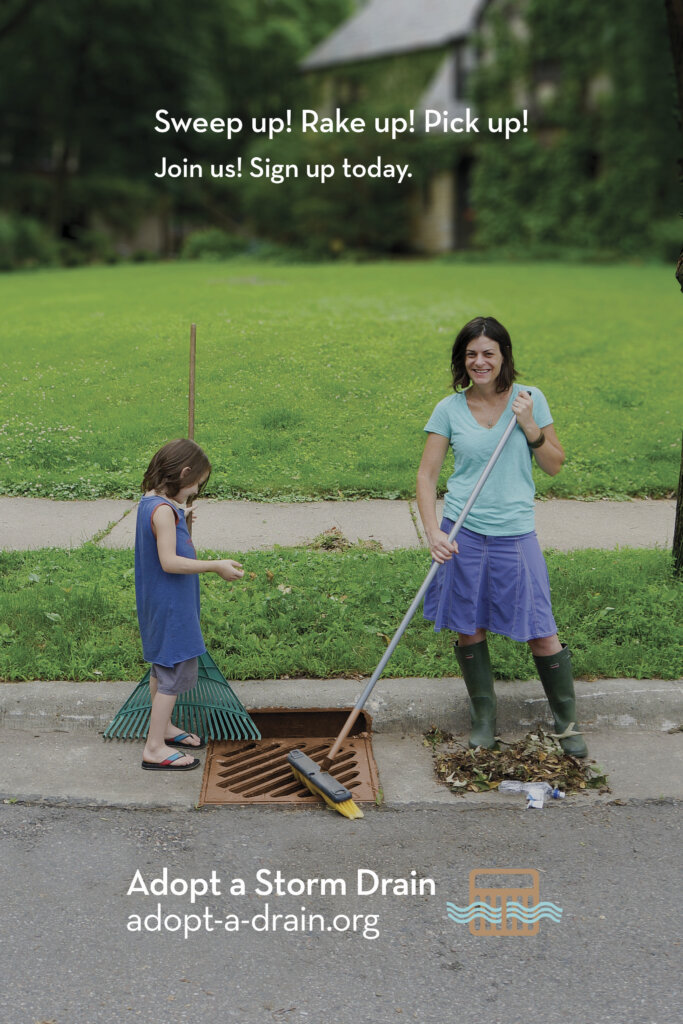
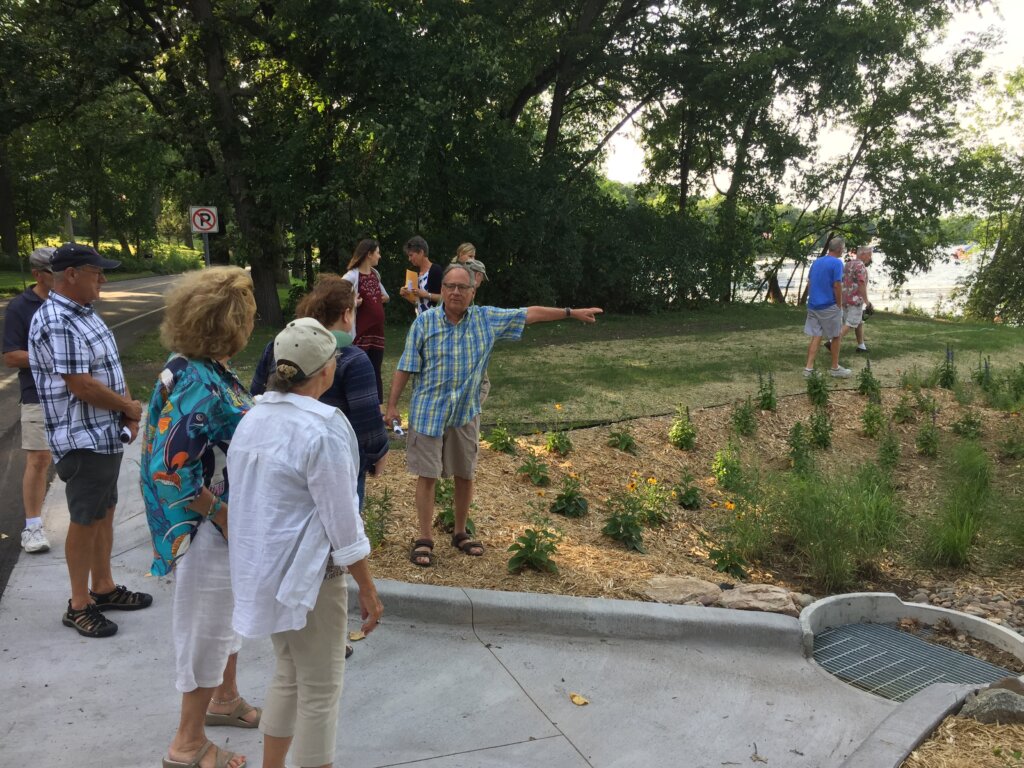
Minnesota Water Stewards
Minnesota Water Stewards is a program that certifies and supports community leaders to prevent water pollution and educate community members to conserve and protect our waterways.
Apply here: Minnesota Water Stewards Website
Storm Drain Stenciling
RCWD provides all the materials to do a storm drain stenciling event.
Storm drain stenciling is an effective community engagement activity to raise awareness about stormwater pollution. By placing stencils on storm drains with messages like “Dump No Waste, Drains to Waterways,” it educates the public that anything entering the drain flows directly into nearby lakes, rivers, and streams, emphasizing the importance of preventing pollution at its source.
Contact staff below to schedule a day to stencil storm drains and pick up supplies.
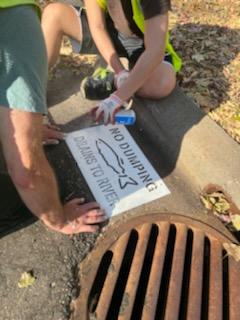
Improve and Protect Water Quality at Your Home
Understanding Stormwater and How to Manage it at Your home
Managing stormwater at home offers dual benefits: environmental and household. Features like rain gardens, permeable pavements, and rain barrels reduce runoff, curbing erosion and pollution in your area. They also protect your property from flooding, preserving its foundation and landscape. You can also conserve water, lower bills and enhance your property’s value.
A Citizen’s Guide to Stormwater: A comprehensive guide to stormwater and the impacts it has on our environment.
Install Rain Gardens, Grow Native Plants
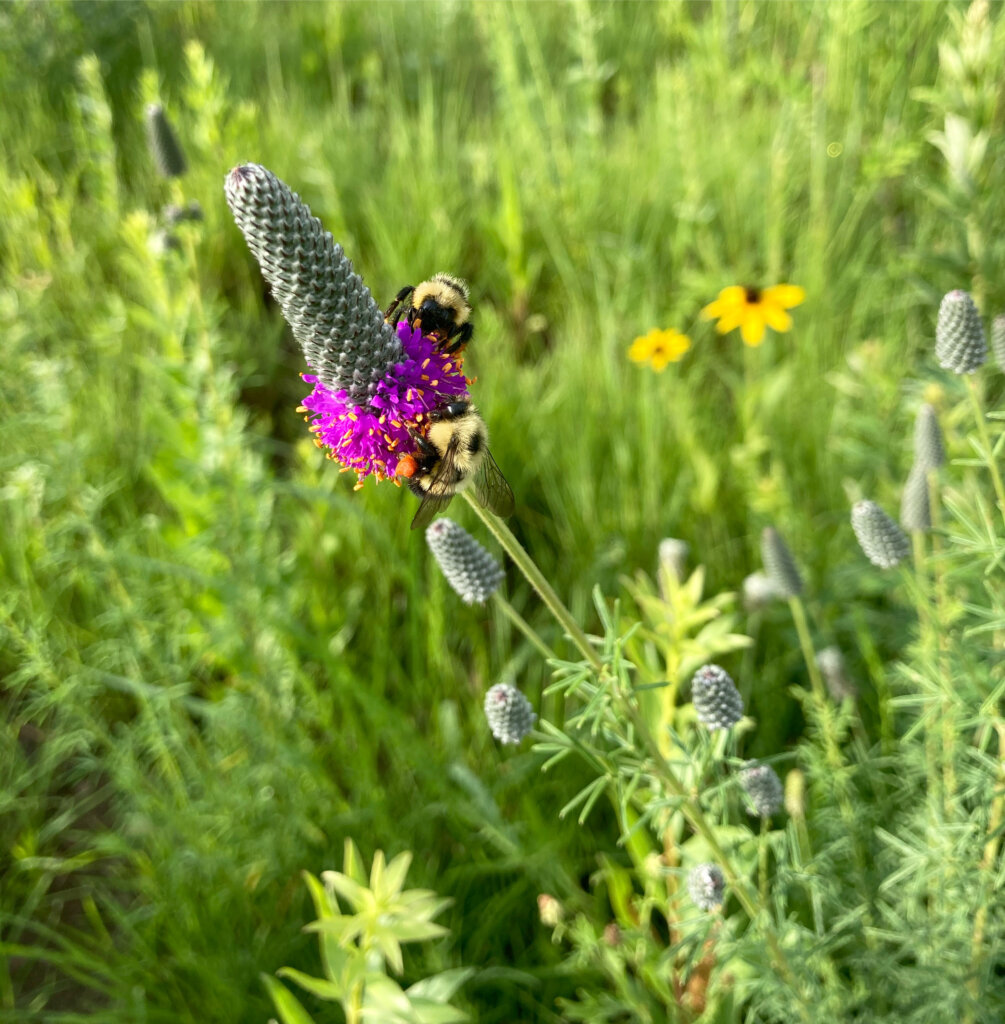
Install rain gardens, native plants, stormwater features, and more at your home! Rain gardens help to capture and filter stormwater runoff, preventing it from carrying pollutants into water bodies. Native plants have deep root systems that aid in soil stabilization, reducing erosion and preventing sediment from entering waterways. Additionally, native plants require less water, pesticides, and fertilizers, reducing the amount of harmful chemicals that can end up in our water systems.
Learn more about rain gardens with this quick YouTube Video from Anoka County Soil and Water District: Rain Gardens 101
- List of Native plant suppliers, landscapers, and restoration consultants for Minnesota here: Minnesota DNR website
Install a Rain Barrel
Rain barrels are great tools for stormwater management and water conservation at home. By collecting and storing rainwater, they reduce the amount of runoff that flows into storm drains, which can cause flooding and pollution.
Benefits:
- Free and sustainable water source for gardening
- Lawn irrigation, and other outdoor activities
- Reduce water bills by reducing reliance on municipal water supplies
Reduce Turfgrass
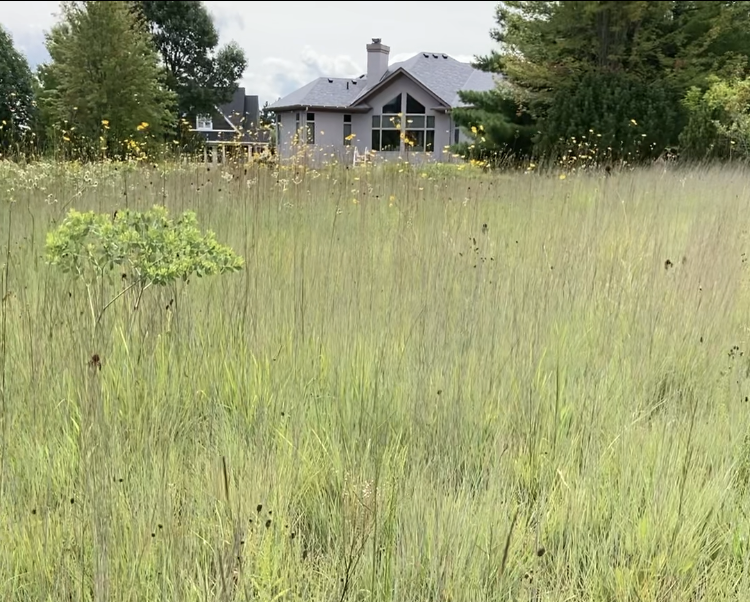
- Replace turf grass with native plants
- Replace traditional turf grass with a “No Mow” seed mix. Requires less mowing and watering.
- Increase areas of landscaping and use native plants instead of traditional cultivar plants
- Replace turf grass with a “Bee Lawn”. Learn more about “Bee Lawns” here: University of Minnesota – Bee Lawns
- Replace parts of your turfgrass with a pollinator garden or rain garden
Installing Permeable Pavements
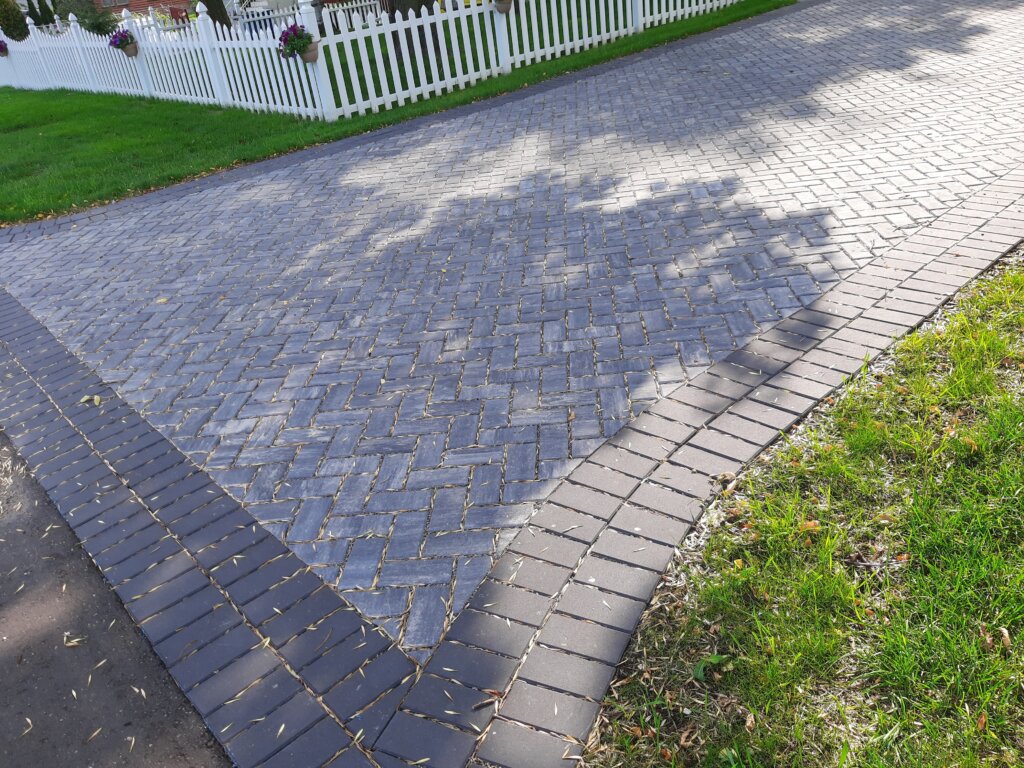
Installing permeable pavements at your home is a great way to counteract the negative effects of stormwater on both your environment and property. They allow rainwater to seep through, reducing runoff and the risk of flooding. By preventing excess water from pooling, you can safeguard against erosion and water pollution, preserving the integrity of your surroundings. Permeable pavements can also enhance the aesthetics of your property.
Your Options for Permeable Driveways, Patios and Paths: Hard surfaces like driveways and pathways are commonly used at our homes but contribute to stormwater runoff and pollution. Permeable pavement offers a solution to mitigate these issues. This video will guide you in understanding your options to make informed choices.
Manage Turfgrass Properly
- MPCA Turfgrass Best Management Practices: MPCA Turfgrass Website
Best management practices (BMPs) for turfgrass from the MPCA/MDA. The purpose of these BMPs is to protect water resources, humans, and insects/pollinators. - MPCA Turfgrass Maintenance Training: MPCA Turf Maintenance Training
The turf grass maintenance training focuses on best management practices (BMPs) for lawn/turf care maintenance. This training is about 6 hours long, including a test. - U of M Turf Best Management Practices: University of Minnesota Turfgrass Website
Best Management practices for turf grass from the University of Minnesota.
Reduce Salt Usage in Winter
- MPCA Smart Salting Program and additional resources: MPCA Smart Salting Website
The MPCA Smart Salting Program provides training and resources to businesses and professionals, promoting responsible salt application practices to minimize environmental impacts and protect water quality during winter road maintenance. - Low Salt No Salt Program: “Low Salt, No Salt Minnesota, an innovative new program that builds community capacity to maintain winter safety while reducing chloride-based deicer use and its associated damages through relationships with local properties managed by resident boards.”
- Chloride in our water information from the MPCA: MPCA Chloride Website
Navigating City Ordinances Regarding Native Plants and Non-Traditional Lawns
Navigating ordinances in your city can be a crucial but sometimes complex task. These ordinances are designed to strike a balance between property owners’ rights and community interests in biodiversity and ecological health. Understanding and complying with these regulations typically involves researching the specific rules and restrictions in one’s city or municipality, which can vary widely.
On the positive side, many cities are increasingly recognizing the benefits of native plants. One example provide below from Roseville, MN. There are many cities around RCWD that support alternative landscaping and yards.
Example Ordinance and Policy from Roseville
1011.03 Landscaping and Screening in All Districts
Section 6 “Alternative Landscape Options: The City (Roseville) encourages the use of special design features such as xeriscaping, raingardens/bioswales, rooftop gardens, native landscapes, integrated pedestrian facilities, and public art.”
2023 MN Legislation Update: Cities must now allow managed natural landscaping to be installed and maintained on all parcels.
Effective July 1, 2023, municipalities are required to allow property owners and occupants to install and maintain managed natural landscapes (native plants).
This legislation offers several significant benefits. It encourages biodiversity by allowing native plant species to thrive, which, in turn, supports local wildlife populations and helps maintain ecological balance. It contributes to improved air and water quality by reducing the need for chemical fertilizers and pesticides. Moreover, native landscapes enhance the aesthetic appeal of urban areas, promoting a stronger connection to nature and overall well-being for residents. These natural landscapes can also be more cost-effective to maintain, as they require less water and maintenance than traditional lawns.
- Article from MN League of Cities regarding new legislation: Focus on New Laws: Managed Natural and Native Landscaping Permitted in Cities
- HF 1830 (House Bill Language)
- Article from WSB regarding new legislation: How Communities Can Prepare for Minnesota’s New Native Landscaping Law
Attend RCWD Events and Meetings
Attend RCWD events and meetings such as workshops, project tours, Board Meetings, public hearings, community engagement events, educational programming, and more. Being involved locally is a way to get your voice heard and to advocate for water resource issues in your community.
Visit our Events page to see upcoming events and other opportunities.
Homeowner Associations (HOA) in RCWD
An HOA, managed by resident homeowners, oversees the management of a community. Many HOAs have stormwater features like rain gardens and ponds that were installed by developers to fulfill permit requirements, aiming to reduce runoff, protect water quality, and minimize flood risks. It’s crucial for HOA members to understand their responsibilities, especially when the developer transfers ownership of shared spaces and stormwater features to the HOA. Ongoing maintenance, including the stormwater features, may be part of the HOA’s responsibilities.
Resources Available for HOA’s and homeowners in these communities, click here.
Contact
To get involved and learn more, please contact:
